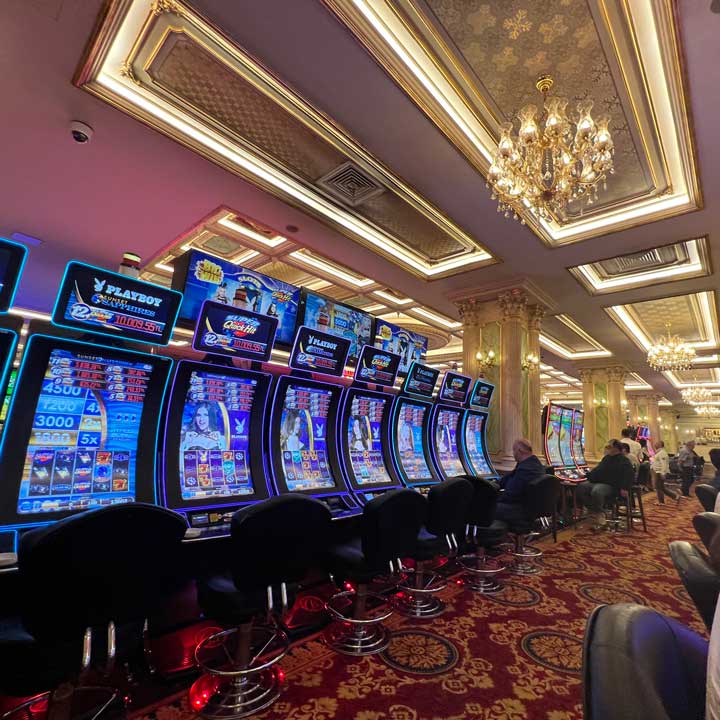
The sphere of gambling entertainment has long captivated players with its blend of adventure, strategy, and the thrill of chance. With tech advancements advances and the gambling landscape transforms, an new approach known as game-based learning has started to redefine the way we interact with these classic activities. TP88 By including gaming elements such as tasks, incentives, and progress tracking, this approach enhances player engagement and transforms the traditional casino environment into a more dynamic and inviting environment.
Gamification in casino entertainment not only draws to experienced gamblers but also draws in a fresh group of participants who want a more involved experience. With elements that encourage participation and build connection among participants, the gamified elements infuse fresh energy into cherished classics like casino poker, 21, and slot machines. In we dig further into this trend, we will analyze how this trend is transforming the casino atmosphere, making it more inclusive, fun, and rewarding for everyone involved.
Grasping Game Elements
Game mechanics is the application of gaming features in non-game environments to enhance player engagement and interaction. In the realm of gaming, this idea has gathered considerable traction, changing conventional gaming into a much interactive and fulfilling adventure. By incorporating elements such as scores, stages, and benefits, casinos can build an atmosphere that motivates players to participate more frequently and for extended periods.
At the heart of gamification is the urge to harness the natural desires of players. Gaming experiences that employ gamification methods are designed to not only entertain but also to foster competition and success. Players are often compelled to the prompt responses and advancement monitoring that these features provide. This not only retains them involved but also nurtures a notion of achievement as they reach objectives and access fresh elements.
Additionally, gamification can enhance community interaction among players, fostering a community atmosphere that enhances the satisfaction of gaming experiences. Features such as leaderboards, group contests, and collaborative tasks allow players to engage with others, share stories, and compete in a cordial manner. This community element adds an extra layer to the experience, allowing it to be more engaging and pleasurable for participants.
Influence on User Interaction
Game design strategies in casino games have significantly altered the way players connect with their favorite activities. By adding elements such as incentives, rankings, and trophies, gaming platforms create an atmosphere that promotes a stronger relationship between users and the experiences they enjoy. This enhanced engagement results to extended gaming periods and increased player loyalty, as players endeavor to reach new stages or claim special bonuses.
Additionally, the communal feature of game-based casino games cannot be overlooked. Many platforms allow players to compete against peers or other users, which adds a layer of anticipation and camaraderie. This rivalry drives engagement by accessing into gamers’ desire to win, prompting them to revisit for extra in order to improve their standings or demonstrate their successes. As a result, the connections between players foster a sense of community that keeps players to play again.
Furthermore, the immediate responses and recognition provided by game elements serve to inspire users. It may be a alert of a new achievement or the thrill of earning a bonus, these instant rewards play a vital role in maintaining attention. By constantly providing players for their actions, casino games become not only a pastime; they transform into an interactive experience that holds players and boosts their overall enjoyment.
Trends in Casino Game Design
The landscape of casino game design is continuously evolving, driven by technological advancements and shifting player preferences. One important trend is the integration of interactive technologies, such as VR reality and augmented reality, to enhance the gaming experience. Such technologies create a more captivating environment, allowing players to feel as though they are in a real casino, which can lead to longer play sessions and heightened player satisfaction.
Another trend is the integration of narrative elements into casino games. Game designers are concentrating on storytelling to create a stronger connection between the player and the game. This story-centric approach not only makes the games more enjoyable but also motivates players to engage emotionally, which can enhance their overall experience. By blending traditional gaming mechanics with captivating stories, developers are attracting a wider audience who may not have previously engaged with casino games.
Finally, the rise of social gaming features is reshaping how players interact with casino games. Many games now feature social elements, such as sharing achievements or challenging with friends, to promote social interaction and engagement. This trend reflects a move towards a more participatory experience, where players can link with others, sharing their enthusiasm and struggles. As casinos adapt to these social dynamics, the act of gaming becomes not just about individual play, but also about building connections among players.